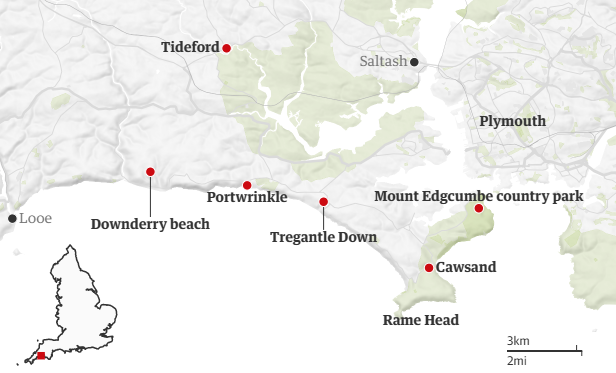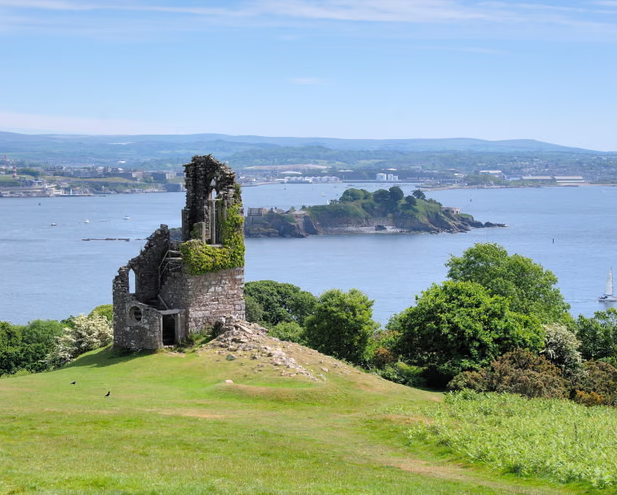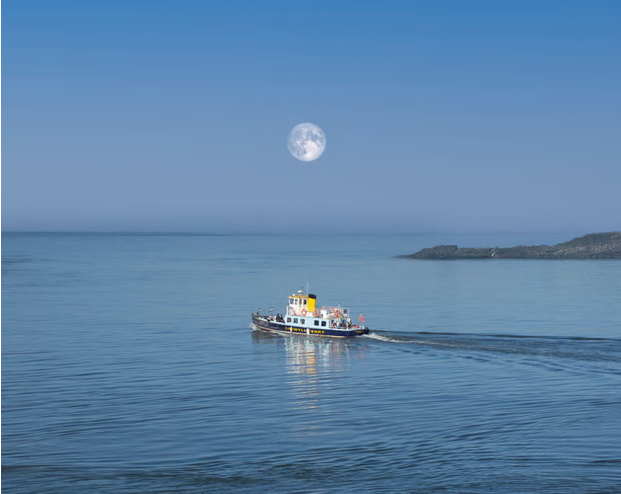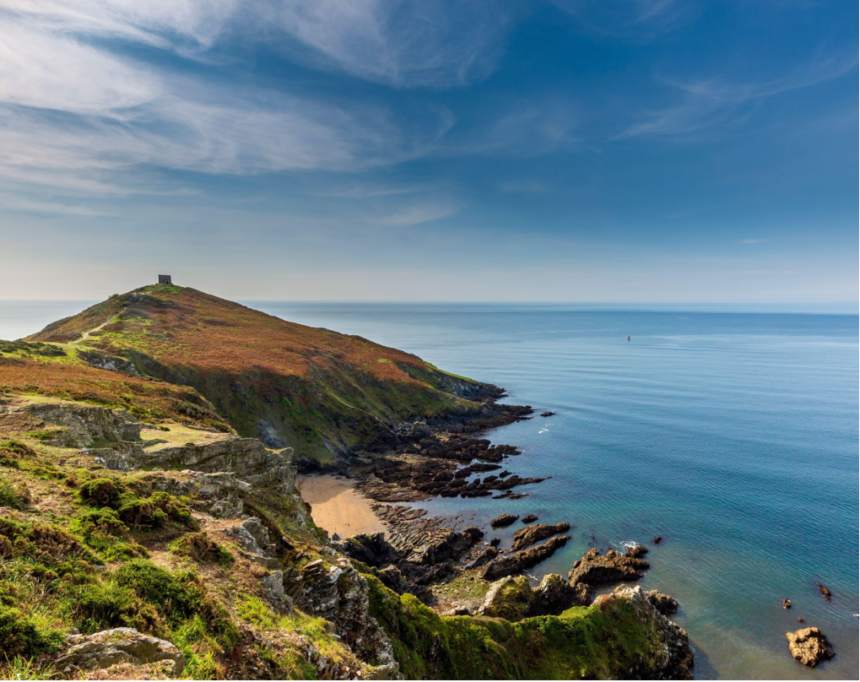South-East Cornwall Coast Walk: Exploring the Rame Peninsula’s Hidden Beauty
The South-East Cornwall coast walk offers wild beauty, peaceful paths, and unspoiled beaches—especially across the quiet Rame Peninsula. At the edge of Downderry’s shingle beach, rocks tumble into a long stretch of sand beneath steep cliffs. A man sits on the rocks with five scruffy dogs, one of which brushes its wet nose against my leg.
Every coastal walk has turning points. On this path, we soon face one: stay on the beach or climb the cliff? What’s the tide doing? More urgently—will these dogs bite me? It’s happened before.

“Nice dogs,” I say.
“They’re all right,” the man replies with a shrug.
I ask if there’s a way up the cliff.
He points ahead. “Just before the headland—look for a blue rope. It’s a scramble. Tide’s going out. You’ll manage. Lovely day for it.”
We thank him and head off, unsure whether we’ve just been set up for something unexpected.
Why the South-East Cornwall Coast Walk Is Often Overlooked
The Rame Peninsula is often called the “forgotten section” of the South-East Cornwall coast walk. Cut off by modern road and rail routes from Plymouth, the area is largely bypassed by tourists. Yet it holds a treasure trove of hidden coves, peaceful cliffs, and quiet coastal paths.

I first walked the South West Coast Path in 1978. Its statistics intrigued me—630 miles, 13 ferries, over 4,000 signs. I hitchhiked with a friend to Plymouth, got lost, and eventually reached Land’s End. Over the years, I walked most of the trail—but I never returned to this stretch west of Plymouth. Now, I discover it’s one of the least visited parts, which only adds to its charm.https://www.youtube.com/watch?v=FefSuiJNeAY
Scrambling Beaches, Naturist Spots, and Coastal Wildflowers
Back on Downderry beach, we check the tide and go in search of the blue rope. That’s when we find out why the man grinned. A naked man stands calmly in the shallows—Battern Cliffs, it turns out, is a known naturist beach.

Beyond that, the scramble begins. The rope leads through a shaded forest of holm oaks. The plant life here is a constant joy—tiny ferns, tall columns of viper’s bugloss, and patches of spleenwort thrive in the cool dampness. We stumble across the ruins of a Victorian folly, St Germans’ Hut, before rejoining the South West Coast Path and walking in sunshine toward Portwrinkle.
The History Behind the South-East Cornwall Coastal Route
This route was once the main way into Cornwall. Before railways and roads, travellers crossed the Rame Peninsula from Plymouth, rowing across the Hamoaze and walking through the landscape that captivated artists like J.M.W. Turner. In 1811, Turner sketched this coastline with awe, helping shift Cornwall’s image from “brooding evil” to romantic beauty.

Today, the path winds through centuries of coastal history—hidden harbours, smuggler’s coves, and ancient stone follies remind us how many have walked this way before.
From MoD Detours to Coastal Serenity on the Rame Peninsula
After a night in a welcoming B&B in Sheviock (with a local pub run by true characters), we rejoin the trail near Whitsand Bay. Soon, red flags fly—Ministry of Defence training closes part of the path, and we’re pushed onto the road. Annoying, but brief.
Soon we reach Rame Head, a dramatic point that rewards us with sweeping views and secret beaches. We continue toward the twin villages of Kingsand and Cawsand, where we find excellent pubs and a fantastic seafood restaurant, The Bay.
Mount Edgcumbe Gardens and the Final Ferry to Plymouth
The next morning, we wander through the 865-acre Mount Edgcumbe Country Park. Even in autumn, the landscape is full of life. In spring, its camellias would be dazzling. The route feels timeless—woodlands, ruins, and gentle hills all lead us down to the water’s edge.
We catch the Cremyll foot ferry across the Hamoaze to Plymouth. Any old bitterness from my 1978 misadventure disappears quickly. Today, the revitalised Royal William Yard greets us with cafes, a brewery, and art studios. Warships glide out into the Sound. At the Hoe, swimmers dive from stone steps into cool, clear sea.
I join them. It’s the perfect end to a South-East Cornwall coast walk that has truly surprised and restored me.




